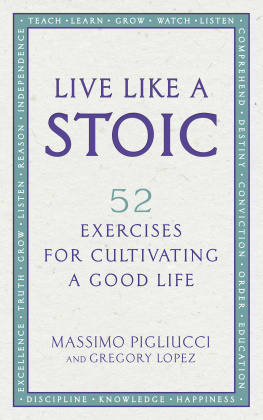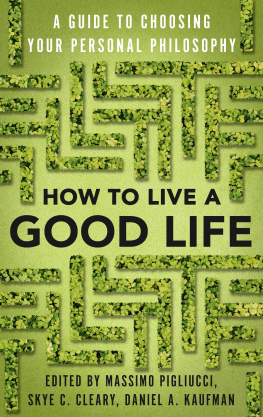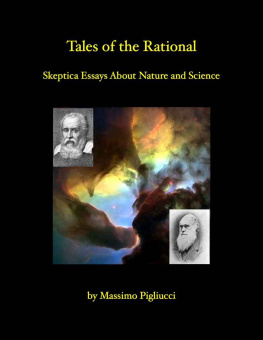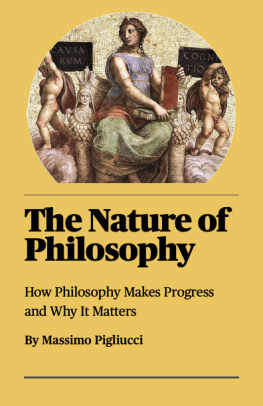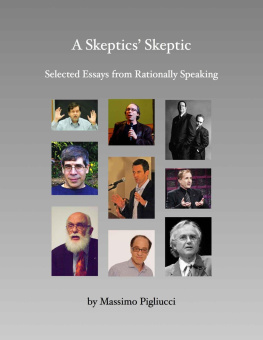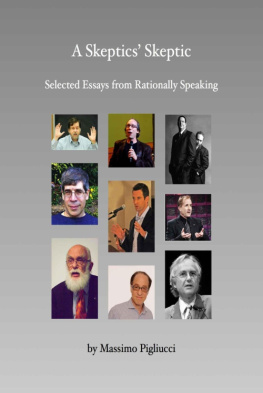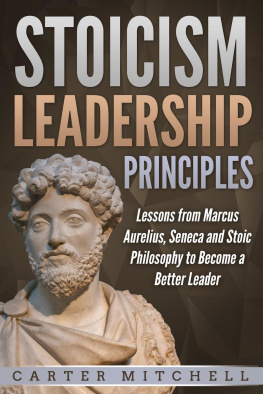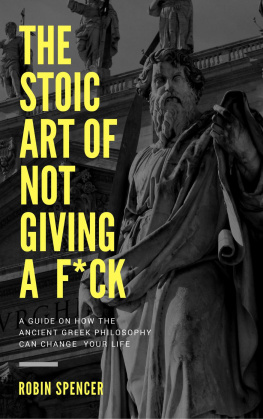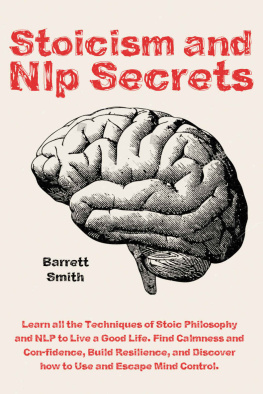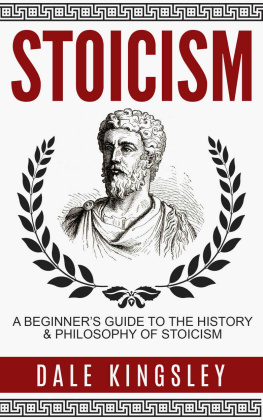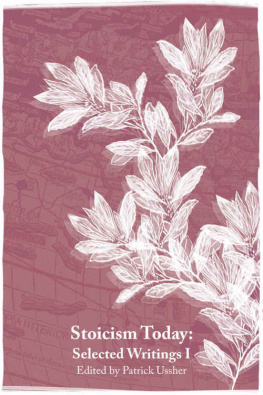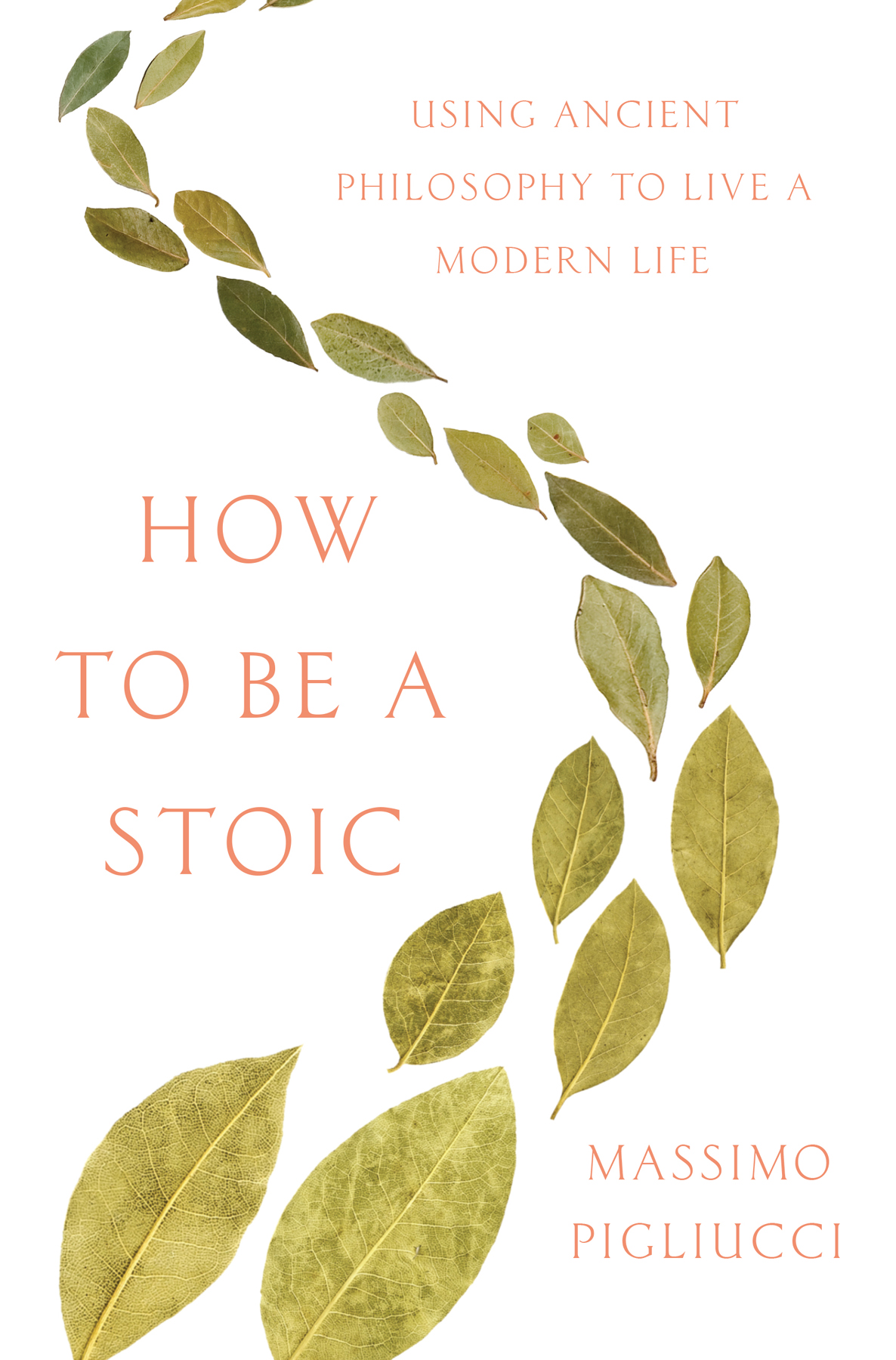To Caley Luna, who has just begun her own journey into philosophy. May it change her life for the better, as it has mine. To Corinna, who has encouraged me a great deal to become a better person through the practice of Stoicism.
Midway upon the journey of our life
I found myself within a forest dark,
For the straightforward pathway had been lost.
D ANTE, T HE D IVINE C OMEDY: I NFERNO, C ANTO I
I N EVERY CULTURE WE KNOW OF, WHETHER IT BE SECULAR or religious, ethnically diverse or not, the question of how to live is central. How should we handle lifes challenges and vicissitudes? How should we conduct ourselves in the world and treat others? And the ultimate question: how do we best prepare for the final test of our character, the moment when we die?
The numerous religions and philosophies that have been devised over human history to address these issues offer answers ranging from the mystical to the hyper-rational. Recently, even science has gotten into the business, with an onslaught of technical papers and popular books on happiness and how to achieve it, accompanied by the obligatory brain scans displaying your brain on whatever it is that may increase or decrease your satisfaction with life. Correspondingly, the tools to seek answers to existential questions vary as much as the approaches that have been usedfrom sacred texts to deep meditation, from philosophical arguments to scientific experiments.
The resulting panorama is truly astounding and reflects both the creativity of the human spirit and the urgency that we obviously attach to inquiries into meaning and purpose. You can embrace any of a large variety of options within the Judeo-Christian-Islamic religions, for instance; or choose one of a panoply of schools of Buddhism; or opt instead for Taoism, or Confucianism, among many others. If philosophy, rather than religion, is your cup of tea, then you can turn to existentialism, secular humanism, secular Buddhism, ethical culture, and so forth. Or you can arrive instead at the conclusion that there is no meaningindeed, the very search for it is meaninglessand embrace a happy sort of nihilism (yes, there is such a thing).
For my part, Ive become a Stoic. I do not mean that I have started keeping a stiff upper lip and suppressing my emotions. As much as I love the character of Mr. Spock (which Star Trek creator Gene Roddenberry purportedly modeled after hisnave, as it turns outunderstanding of Stoicism), these traits represent two of the most common misconceptions about what it means to be a Stoic. In reality, Stoicism is not about suppressing or hiding emotionrather, it is about acknowledging our emotions, reflecting on what causes them, and redirecting them for our own good. It is also about keeping in mind what is and what is not under our control, focusing our efforts on the former and not wasting them on the latter. It is about practicing virtue and excellence and navigating the world to the best of our abilities, while being mindful of the moral dimension of all our actions. As I explain in this book, in practice Stoicism involves a dynamic combination of reflecting on theoretical precepts, reading inspirational texts, and engaging in meditation, mindfulness, and other spiritual exercises.
One of the key tenets of Stoicism is that we ought to recognize, and take seriously, the difference between what we can and cannot master. This distinctionalso made by some Buddhist doctrinesis often taken to indicate a tendency of Stoics to withdraw from social engagement and public life, but a closer look at both Stoic writings and, more importantly, the lives of famous Stoics will dispel this impression: Stoicism was very much a philosophy of social engagement and encouraged love for all humankind and Nature as well. It is this apparently contradictory tension between the advice to focus on ones thoughts and the social dimension of Stoicism that drew me to it as a practice.
I arrived at Stoicism, not on my way to Damascus, but through a combination of cultural happenstance, lifes vicissitudes, and deliberate philosophical choice. In retrospect, it seems inevitable that my path would eventually lead me to the Stoics. Raised in Rome, I have considered Stoicism part of my cultural heritage ever since I studied ancient Greek and Roman history and philosophy in high school, although it wasnt until recently that I sought to make its principles part of my everyday life.
I am by profession a scientist and philosopher, and I have therefore always been inclined to seek more coherent ways to understand the world (through science) and better choices for living my life (through philosophy). A few years ago, I wrote a book,


